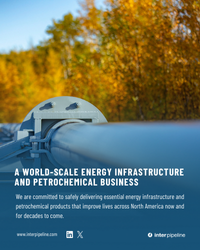California and New England are two of the nation’s quirkier regions when it comes to energy –– and we mean that in the nicest way possible. So maybe it’s not too surprising that, at a time when the U.S. is just beginning a big push to export natural gas as LNG, the Golden State and “Yankeeland” (as some still refer to New England) are turning to imported LNG to help them deal with possible gas shortages during peak demand periods this coming winter. In neither case is liquefied natural gas considered to be a long-term fix, but –– for now at least –– LNG may be playing a role in keeping the pilot lights lit and the electric lights on. Today, we look at how the stockpiling and use of LNG can still make sense in a nation with an abundant supply of gas.
Just a few years ago, before the dawn of the Shale Era, just about everyone thought that U.S. natural gas production had peaked and that our energy future would involve increasing volumes of imported LNG. That sparked the development of a number of LNG import terminals, most of them along the Gulf and Atlantic coasts. Mexico, anticipating a similar fate, developed a few import terminals too, including one –– Energía Costa Azul –– in Baja California, just south of San Diego, CA. As we all know, the Shale Revolution turned LNG-importing plans on their head (at least in the U.S.), and several of those LNG import terminals are being converted into liquefaction/LNG export terminals with the aim of selling a significant portion of U.S. gas production overseas. All this makes it somewhat ironic that, given the vast volumes of gas being produced domestically today, LNG imports are making a bit of a comeback, if only temporarily and for a special purpose –– namely, as a backup source of gas in the event that existing regional infrastructure cannot supply enough traditionally piped-in natural gas during short periods of very high demand.
We’ve seen this play out the last few winters in New England, that six-state stew of Red Sox fans with occasionally unfathomable accents. The region is also known for being short on gas pipeline capacity, particularly in recent years as New England’s electric grid has been adding a lot of gas-fired generation (and shutting down older coal-fired and nuclear units). We’ve blogged about this often, including in our Please Come to Boston series and, more recently, in One Step Up and Two Steps Back. There, we discussed ongoing efforts to add pipeline capacity from the nearby Marcellus/Utica shale plays into New England, as well as strategies that ISO New England (the regional grid operator) and electric-grid stakeholders were employing to help keep the lights on until that incremental pipeline capacity was in place. In the winter of 2013-14, ISO New England’s Winter Reliability Plan (WRP) provided financial incentives to power generators with dual-fuel units (that is, those that can be fired with either natural gas or oil) to stockpile oil so they could switch to oil firing in the event that there was insufficient pipeline gas available during a Polar Vortex-like event. In the winter of 2014-15 WRP was expanded to incent owners of gas-fired units to stockpile LNG and to convert their units to dual fuel; that plan (which by most accounts has worked very well) continued unchanged in the winter of 2015-16, and will be used again this coming winter. The new-news on this subject is that the need for LNG backup in New England may be a longer-term thing than once thought because the plans for two of the biggest pipeline-capacity additions in the region have skidded into a ditch. First, Kinder Morgan in April 2016 cancelled its proposed Northeast Energy Direct pipeline, which would have moved 1.3 Bcf/d of Marcellus/Utica gas from near Albany, NY to near Boston. The cause of death was lack of shipper commitments, in part due to the fact that in New England’s competitive electricity market, gas-fired power generators are not automatically compensated for making long-term commitments for pipeline capacity. Second, in mid-August (2016), Massachusetts’ Supreme Judicial Court threw out the state Department of Public Utilities’ (DPU) determination that it has the authority to approve arrangements under which electric distribution utilities (EDUs) contract for long-term gas pipeline capacity, recover the cost of the deals from their ratepayers, and (when the new capacity is built) make the capacity available to gas-fired generators when they need it, mostly during periods of very high gas demand. (Among the lead plaintiffs in the case challenging the DPU plan was Engie Gas & LNG, whose Distrigas subsidiary imports LNG through its Everett, MA terminal in part to help fuel a nearby 1,550-MW, gas-fired power plant.)
Join Backstage Pass to Read Full Article









